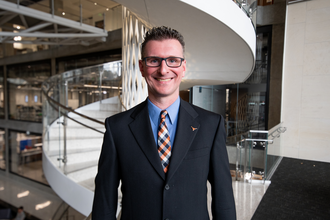Modeling the Economics of Modern Options for Mainline Freight Railway Electrification
The William W. Hay Railroad Engineering Seminar Series
November 8, 2024
12:00 PM - 1:30 PM

Since 1981, all line-haul freight rail operations in the United States have been powered by diesel-electric locomotives, and more recently by liquefied natural gas. While used on several passenger and commuter rail lines, electrification via overhead catenary wire for freight operations in North America is limited to industrial shortlines and a few isolated closed-loop mining railroads. Despite numerous studies over the decades, widespread mainline freight railway electrification has not been adopted by US Class 1 railroads because of various economic, technical, and institutional barriers. However, the combination of evolving technology and the emerging demands of decarbonization provide a new context for evaluating the economics of freight railway electrification using traditional and modern, innovative methods. Accordingly, the CURRENT (Cost, Uncertainty and Risk of Railway Electrification with New Technologies) model has been developed as a risk-based economic analysis framework to aid railroads in evaluating electrification investments, including public benefits and utility partnerships. This seminar reviews traditional obstacles to freight rail electrification, and uses the CURRENT model to demonstrate how new technologies, and strategic operation and implementation approaches, can improve the economics of traditional and intermittent electrification on a case study freight corridor.
Date posted
Nov 4, 2024
Date updated
Nov 4, 2024
Speakers
